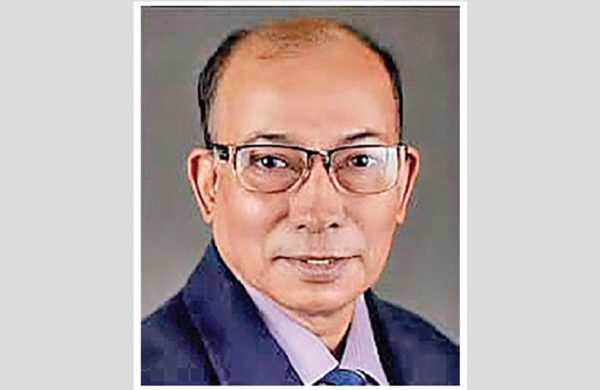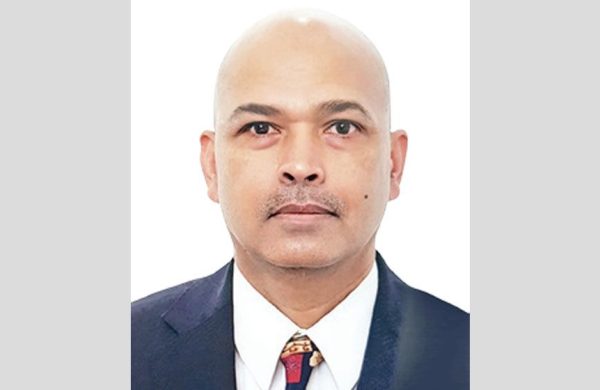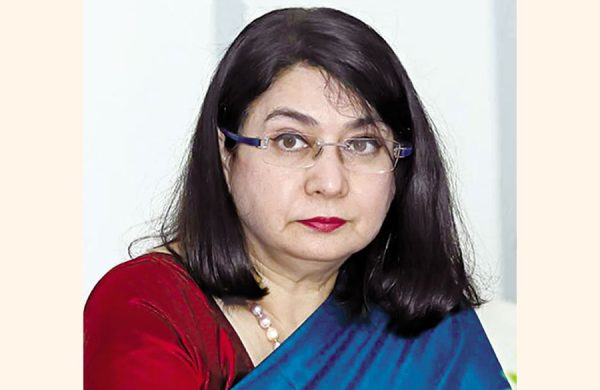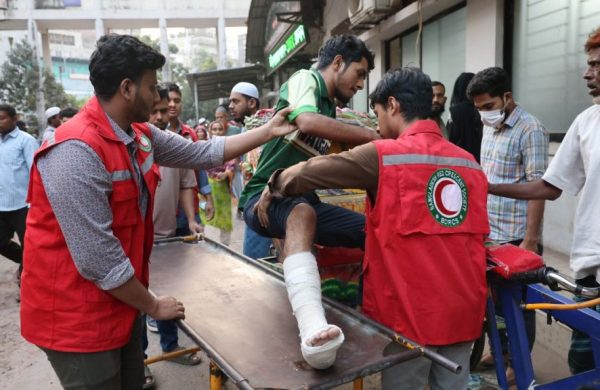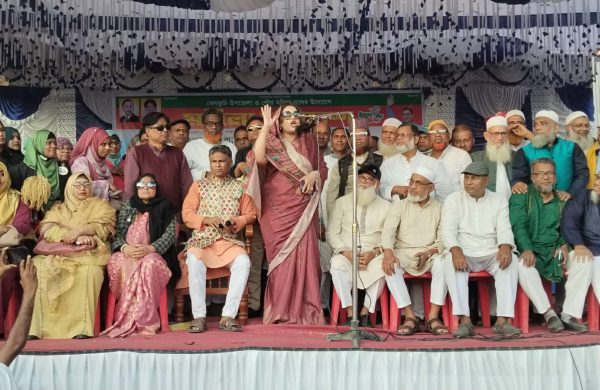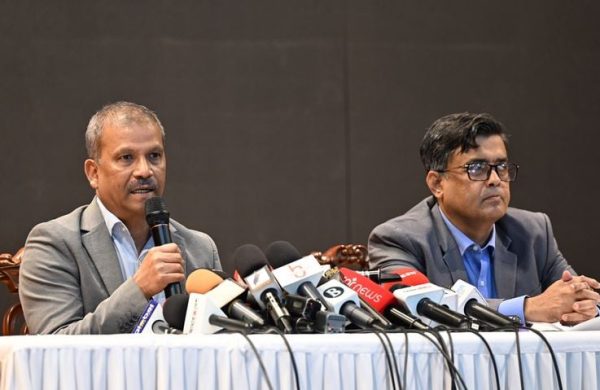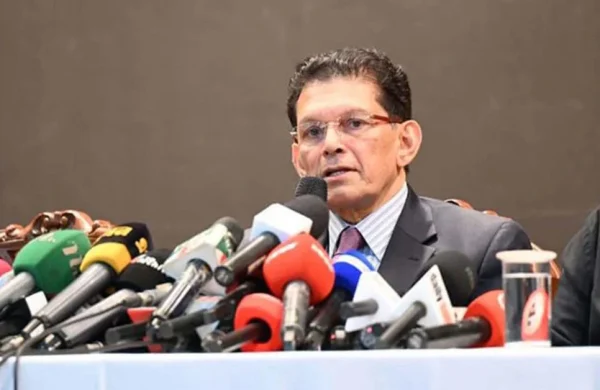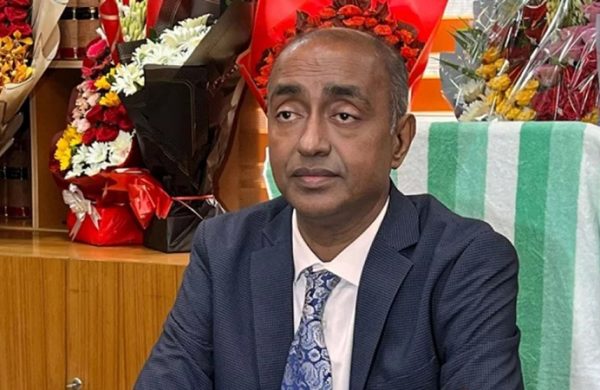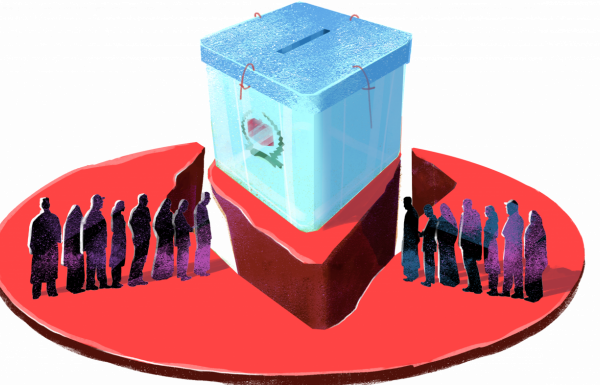Health, Hazards, Harmony and Hope
- Update Time : Wednesday, October 29, 2025
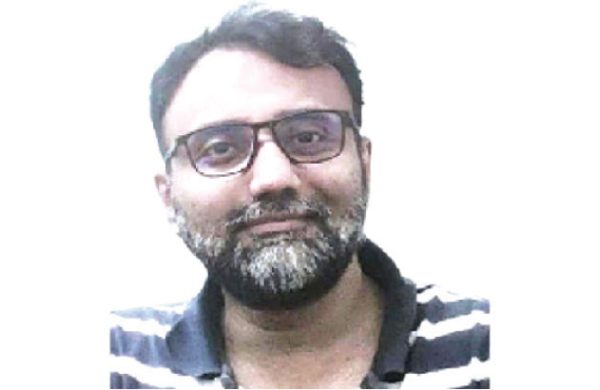
—Simon Mohsin—
Bangladesh has made significant progress in healthcare over the past two decades, with improvements in life expectancy and reductions in maternal and child mortality rates. However, the healthcare system faces persistent challenges, including weak infrastructure, workforce shortages, and inequitable access, particularly for rural and marginalized communities.
The healthcare system is divided into public and private sectors. The public system, managed by the Ministry of Health and Family Welfare, provides essential services but suffers from bureaucratic inefficiencies and corruption. In contrast, the private sector delivers advanced care but is often costly and concentrated in urban areas, widening the gap between the rich and poor.
Health, Hazards, Harmony and HopeAccess to quality healthcare remains a significant issue, with many patients experiencing long travel distances and financial strain from out-of-pocket expenses. There is also an increasing burden of non-communicable diseases, challenging a system historically focused on infectious diseases. This has led many to seek medical care abroad, reflecting a lack of trust in domestic services.
The healthcare system in Bangladesh is plagued by issues such as inconsistent diagnoses and a tendency towards unnecessary surgeries. Many patients express frustration, noting that after consulting multiple doctors, invasive procedures are often recommended instead of non-invasive options. This situation reflects a troubling “culture of unnecessary surgery,” which contributes to financial burdens on families and indicates a lack of clinical oversight and accountability within the system.
Patients are concerned that hospitals are manipulating administrative processes to prolong patient stays and increase costs. It highlights patient reports of delays in ward rounds and discharge approvals, resulting in unnecessary extended care. These practices create mistrust among patients, suggesting that profit is prioritized over their well-being, and emphasize that patient recovery should be the primary focus of healthcare.
Patients express concern about a policy requiring inpatients to bring their own personal attendants, thereby shifting essential caregiving duties onto family members. This policy frustrates families, as patients feel they are paying for full service but receiving inadequate care. It underscores a discrepancy between patient expectations and the actual care provided, potentially undermining the compassion and professionalism of healthcare institutions.
Misdiagnoses and undetected conditions are significant issues for patients in Bangladesh, often resolved through online consultations or foreign healthcare professionals. Limitations in diagnostic resources, outdated technology, and inadequate training create substantial challenges in the healthcare system. Additionally, comprehensive tests and treatments are largely inaccessible to those who are not wealthy, highlighting systemic inequalities in medical care.
Patients are increasingly concerned about their interactions with healthcare staff, reporting encounters that feel dismissive or hierarchical. There are troubling instances of rudeness and informal demands for “tips” that have become common in hospitals, creating a two-tier system where the quality of care seems tied to financial contributions. This normalization of corrupt behaviors undermines medical ethics and leaves patients feeling disrespected and powerless.
Many families face a paradox of affordability in healthcare, where seemingly low initial consultation fees are offset by hidden costs like unnecessary tests and informal payments. This situation, referred to as “systemic leakage,” reflects the corruption and self-serving behaviors within the system, ultimately punishing vulnerable patients despite the illusion of affordable care.
Concerns about hospital infrastructure and hygiene are widespread, with patients reporting overcrowding and unsanitary conditions in public hospitals. Administrative inefficiencies further complicate patient care. Even private hospitals, despite higher expectations, face ongoing inefficiencies. These issues not only jeopardize patient safety but also contribute to a perception of neglect in the healthcare sector.
People highlight a crisis of trust in the healthcare system, where many patients feel wary of doctors’ recommendations and seek multiple opinions before treatment. Concerns about commercialization, profit motives, unclear billing, and inconsistent service deepen patient alienation. A participant’s reflection, “Trust has to be outsourced,” emphasizes the need for trust and transparency, indicating significant work is needed to restore faith in medical care.
The China–Bangladesh health collaboration has emerged as one of the most promising pillars of bilateral engagement, marking a shift from symbolic friendship to tangible health diplomacy.
Under China’s Health Silk Road initiative, the partnership encompasses hospital construction, medical training, telemedicine, and technology transfer to modernize Bangladesh’s healthcare infrastructure. Notably, Beijing’s commitment to build three state-of-the-art hospitals—including the 1,000-bed Bangladesh–China Friendship Hospital in Dhaka—underscores China’s strategic investment in the country’s public health system. Complementary programs in Chattogram and Khulna seek to decentralize advanced medical services, while cooperative ventures between Bangladeshi and Chinese institutions promote capacity building and specialized training for healthcare professionals. The collaboration also extends to patient mobility: hospitals in Kunming have opened dedicated units for Bangladeshi patients, supported by expedited visa processing and translation assistance. Together, these initiatives closely align with Bangladesh’s Vision 2041 goals of achieving universal health coverage, enhancing service quality, and reducing dependence on traditional medical tourism hubs such as India and Thailand.
Despite these advances, however, China’s healthcare services and medical tourism options remain largely beyond the financial reach of most Bangladeshis. Treatment packages in Chinese hospitals—though efficient and technologically superior—are affordable only for upper-middle- and higher-income groups.
Patients frequently report that procedures in Kunming or Beijing, even when competitively priced by global standards, still cost as much as those in Bangladesh’s most expensive private hospitals. For the majority of the population, where over 70 percent of health spending already comes from out-of-pocket payments, such expenses are prohibitive. While the collaboration promises better diagnostics, quality assurance, and modern infrastructure, it risks reinforcing a two-tiered healthcare reality in which international partnerships benefit the affluent. At the same time, the poor remain confined to under-resourced local facilities. Interviews with Bangladeshi patients reveal that “China is world-class—but for most Bangladeshis, it is a dream, not an option.”
To make this collaboration truly inclusive, future policy must prioritize affordability mechanisms, such as subsidized treatment quotas, insurance integration, and domestic centers of excellence co-managed by both nations to deliver high-quality, accessible care within Bangladesh’s borders.
On a related note, Bangladesh is entering an era of rapid population aging, with the proportion of citizens aged 60 and above projected to reach 1 in 5 by 2050. Rising life expectancy—from 65.6 years in 2000 to 73.1 years in 2021—reflects the country’s healthcare progress but also signals an impending strain on health services and social support systems. The elderly, particularly women, face multiple vulnerabilities stemming from financial insecurity, limited mobility, and inadequate healthcare access. Studies show that households bear nearly 93% of the medical expenses for senior citizens, leaving older adults highly dependent on out-of-pocket costs. Chronic diseases such as cardiovascular illness, diabetes, and cancer now dominate the country’s disease burden, while access to affordable, quality care remains limited. The healthcare system’s reactive, treatment-focused approach neglects preventive measures and fitness promotion among the elderly and homemakers—groups whose well-being could be significantly improved through community-based behavioral change and fitness programs. Without proactive policy interventions, Bangladesh risks facing an unsustainable increase in healthcare costs and a growing population of physically and mentally fragile seniors.
Equally alarming is the state of elderly mental health in Bangladesh. Studies indicate that over 80% of older adults suffer from anxiety, depression, or pain-related discomfort. The erosion of extended family structures and the rise of nuclear households have intensified loneliness and social isolation, particularly among widowed and low-income seniors. Research consistently links companionship, social participation, and access to supportive environments with better quality of life, yet such resources remain scarce for the majority of Bangladesh’s aging population. Factors such as age discrimination, poor transport accessibility, insufficient geriatric training among healthcare providers, and cultural taboos surrounding mental health further marginalize the elderly.
Addressing these issues requires a holistic, inter-sectoral approach that integrates physical and mental well-being, social inclusion, and financial protection. A national policy emphasizing healthy aging, social behavior change, and fitness promotion could transform the narrative from one of dependency to one of dignity and active contribution among Bangladesh’s older citizens.
Active ageing represents a crucial shift in how Bangladesh must approach its aging population—transforming healthcare from a reactive, treatment-driven model to a proactive one that prioritizes prevention, fitness, and community engagement. Extensive evidence confirms that regular physical activity mitigates chronic disease risks, enhances mental well-being, and improves overall quality of life among older adults. Yet nearly two-fifths of elderly people in Bangladesh fail to meet the World Health Organization’s (WHO) recommended levels of physical activity. Barriers such as gendered social norms, limited access to safe recreational spaces, urban congestion, and inadequate awareness have restricted the elderly and women from leading physically active lives. In addition, the persistence of sedentary lifestyles, coupled with unhealthy diets and restricted mobility—particularly among urban women—has intensified the risk of non-communicable diseases (NCDs) such as hypertension, diabetes, and obesity. Therefore, promoting physical activity is not only a matter of individual health but a national public health imperative that can substantially reduce long-term medical costs and enhance quality of life.
However, achieving active ageing in Bangladesh requires addressing deep-rooted gender and social barriers that discourage participation in fitness and recreation. Research shows that women are less physically active due to safety concerns, socio-religious restrictions, and the gendered division of public spaces. Cultural norms emphasizing modesty and domestic responsibilities leave women with limited opportunities to engage in outdoor or leisure activities. In rural and conservative communities, elderly women, in particular, are further marginalized by perceptions that exercise is inappropriate or unnecessary at their age. Overcoming these obstacles demands gender-sensitive policy interventions that prioritize women’s safety, inclusivity, and access to public spaces. Urban areas can benefit from developing more pedestrian-friendly infrastructure, gender-responsive parks, and community fitness facilities. Rural areas, on the other hand, can leverage community clinics as platforms for localized fitness promotion, behavior change education, and social inclusion initiatives tailored to elderly and female populations.
Community clinics, already a cornerstone of Bangladesh’s primary healthcare system, offer an untapped opportunity to promote active ageing and preventive health. These clinics can serve as hubs for behavior change interventions—educating communities about the benefits of regular exercise, facilitating group activities for women and seniors, and fostering partnerships with local leaders to promote participation. Integrating fitness programs into community healthcare frameworks will require strategic marketing approaches rooted in social and behavioral change communication, ensuring messages resonate with local cultural norms. Simultaneously, the growing fitness industry in urban Bangladesh offers a complementary avenue for promoting active ageing. By designing affordable, inclusive programs—such as women-only gyms, senior-friendly fitness classes, and digital wellness platforms—private sector actors can contribute to a healthier, more active society. Ultimately, Bangladesh’s path to healthy and active ageing depends on coordinated public and private efforts, where gender-sensitive policies, behavior change marketing, and community-led engagement collectively foster a culture of lifelong health, mobility, and dignity.
Bangladesh’s healthcare story is one of striking progress shadowed by persistent inequity. Despite commendable gains in life expectancy, maternal health, and disease control, access to quality care remains deeply uneven, and public trust in health institutions is fragile. Systemic inefficiencies, unethical practices, and financial strain continue to push families toward catastrophic out-of-pocket expenses. To build a more resilient and humane health system, the country must transition from a reactive model that focuses on curing illness to a proactive one that emphasizes prevention, fitness, and community wellness. Collaborative ventures—such as those with China—offer opportunities for technological advancement and medical innovation, but their benefits will remain limited unless they are made accessible and affordable for all citizens. A nationwide effort that strengthens community clinics, invests in health education, and integrates preventive care into everyday life is essential to ensure that good health becomes a universal right, not a social privilege.
Equally important is the need to recognize that health is not merely a matter of infrastructure or technology—it is deeply cultural and human. The well-being of the nation begins at home, in the rhythms of daily life and the often-unseen care work that sustains families. Encouraging fitness, companionship, and emotional support within households can transform how Bangladesh thinks about wellness. When physical activity, mindfulness, and compassion become part of everyday routines, they nurture not only stronger bodies but also a stronger sense of connection and purpose. The path forward for Bangladesh lies in this integration of policy and culture, where public health reform aligns with personal responsibility and social empathy to create a healthier, more active, and more dignified society.
—————————————————
The writer is a political and international affairs analyst


